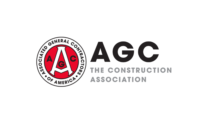A proposed hazardous air pollutant regulation for the cement industry undermines the balance between environmental protection and economic viability, according to statements the Portland Cement Association is issuing this week at a series of public hearings.
In May, the U.S. Environmental Protection Agency announced amendments to the national emission standard for hazardous air pollutants for the Portland cement manufacturing industry. It requires new emission standards for mercury, total hydrocarbons, hydrochloric acid and particulate matter.
The regulations, as published, are based on a new approach to setting regulatory standards that results in excessively stringent and costly requirements. If adopted, the standards would undermine the stability of the domestic cement industry, endangering thousands of jobs.
Industry studies have shown the new guidelines could lead to forced closure of plants, creating hardship in cities throughout the country.
“Pushing cement production to other countries would ‘OPEC’ the industry and make the U.S. dependent on cement imports,” said Andy O’Hare, PCA vice president for regulatory affairs. “In addition, because these countries have fewer regulations global emissions of mercury and carbon dioxide could actually increase.”
U.S. cement production and its related industries employ tens of thousands of Americans and produce a product that is absolutely essential to many of the infrastructure construction projects identified by the Obama administration and the Congress as important to the nation’s economic recovery. To meet expected demand, the U.S. will need to produce 30 percent more cement by 2020.
“If this rule is adopted, domestic cement supply will be constrained and investments in cement capacity expansion avoided, causing the stimulus package to advance fewer projects with less jobs created,” O’Hare said. “A reasonable rule-building on the good record of current regulatory programs and setting achievable standards based on demonstrated achieved emissions control strategies-would not act at cross-purposes to economic recovery.”
At a series of public hearings held this week by the EPA, the industry will recommend the rule be revised to reflect real world data about what controls can be placed on cement kilns and the emissions control levels that can be achieved in practice with those controls. It will call for emission standards based on demonstrated emission control strategies and on logical subcategorization of cement plants, as required under the Clean Air Act, to ensure that standards are both reasonable and achievable.
“The cement industry takes its environmental performance seriously,” O’Hare said. “During the last decade, cement plants have successful addressed the rising demand for Portland cement while developing and implementing environmentally and socially responsible business practices. The industry has invested in technology to reduce air emissions, minimize waste production, recycle and recover inputs, enhance energy efficiency, and conserve natural resources-all the while producing a reliable and affordable supply of building materials to support our economy.”
PROPOSED EPA REGULATIONS THREATEN THOUSANDS OF JOBS
Looking for a reprint of this article?
From high-res PDFs to custom plaques, order your copy today!




